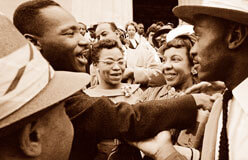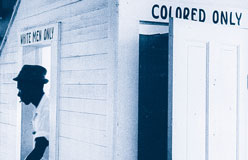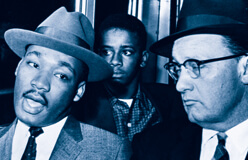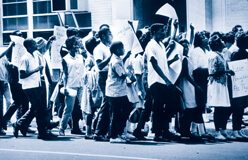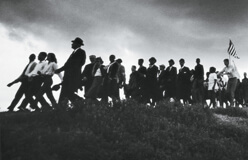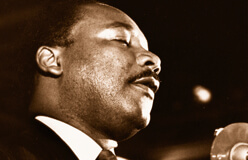In 1967, Martin Luther King was busy planning a new march on Washington. Called the Poor People’s Campaign, it would bring thousands of blacks and whites to the capital to demand jobs and fair pay.
He had traveled to Chicago to try to end segregation in the schools and unfair housing practices there. He had also begun to actively oppose the war in Vietnam. But his work on the Poor People’s Campaign was interrupted when garbage workers in Memphis, Tennessee, went on strike. They needed someone well known to take on their cause, and an old friend of King’s asked him to be that person. In March of 1968, King led 6,000 people in a march through Memphis. Some young blacks started to throw rocks and break windows. Then looting began. King was rushed to safety. But he knew he had to return to Memphis and finish the job.
